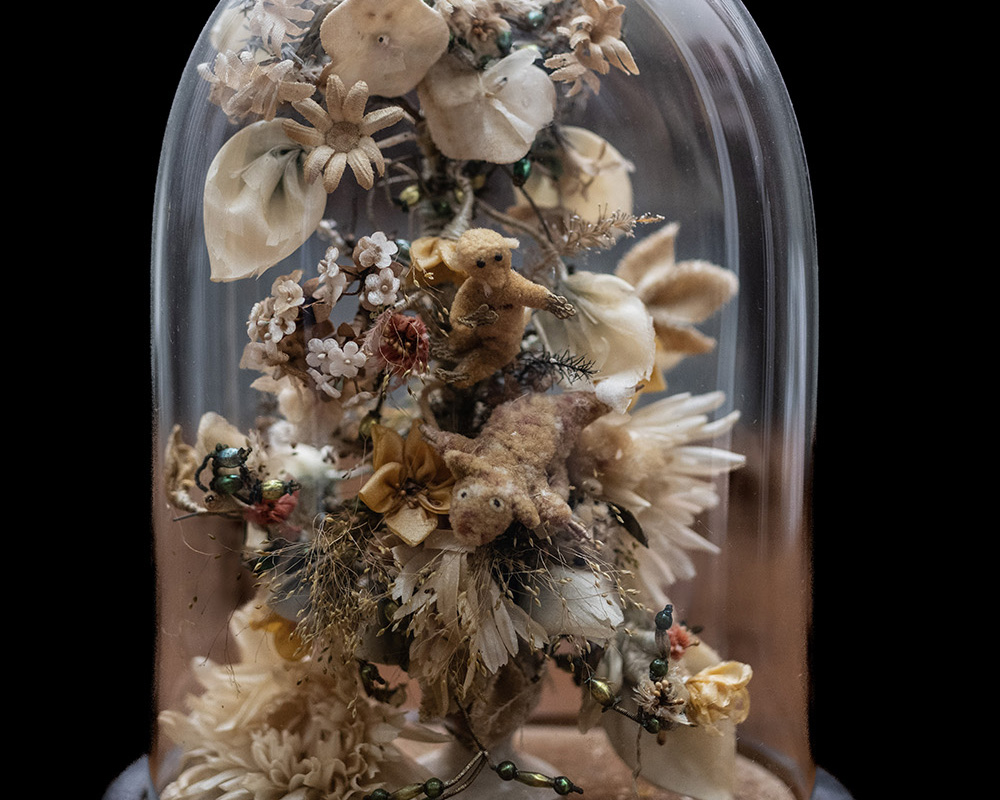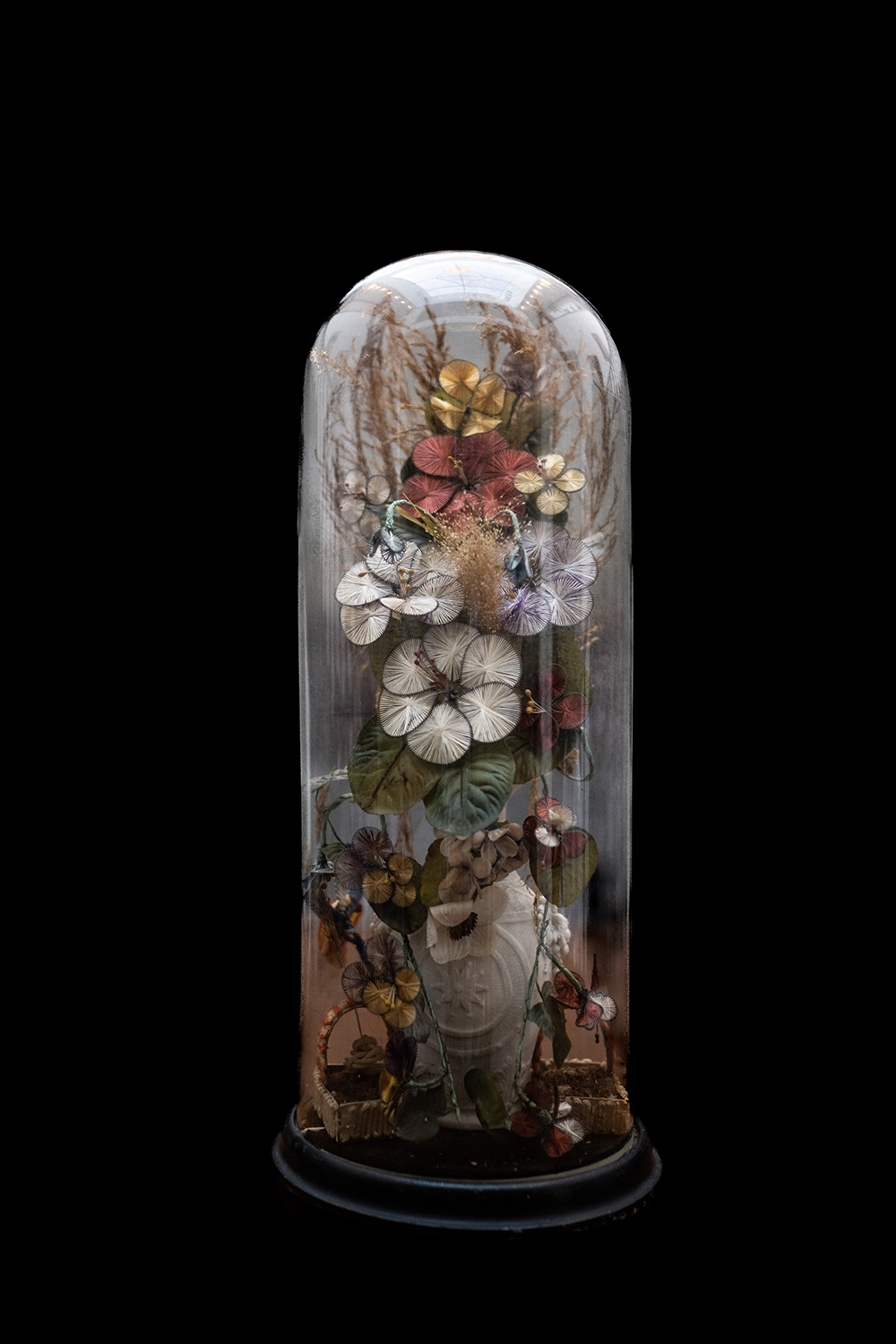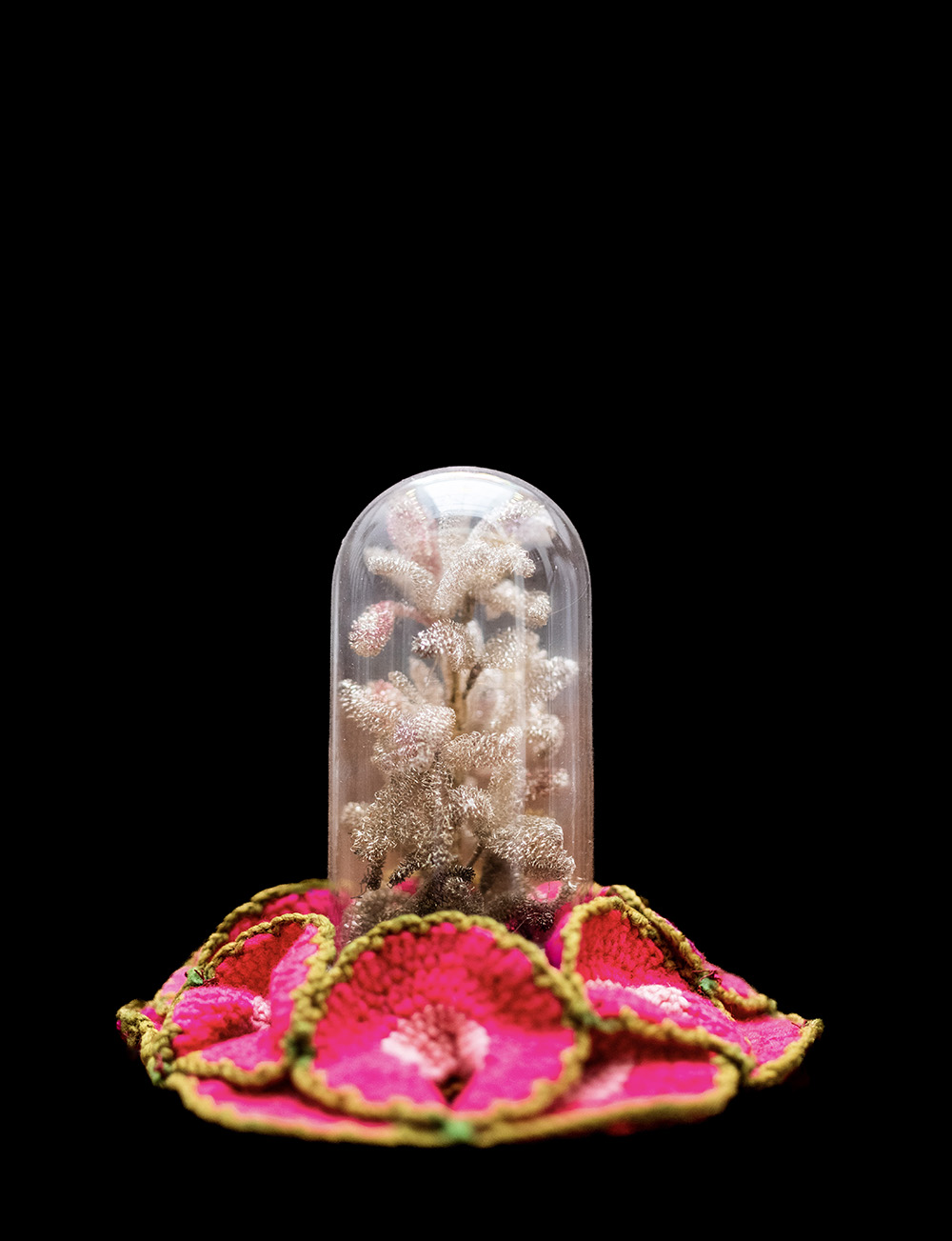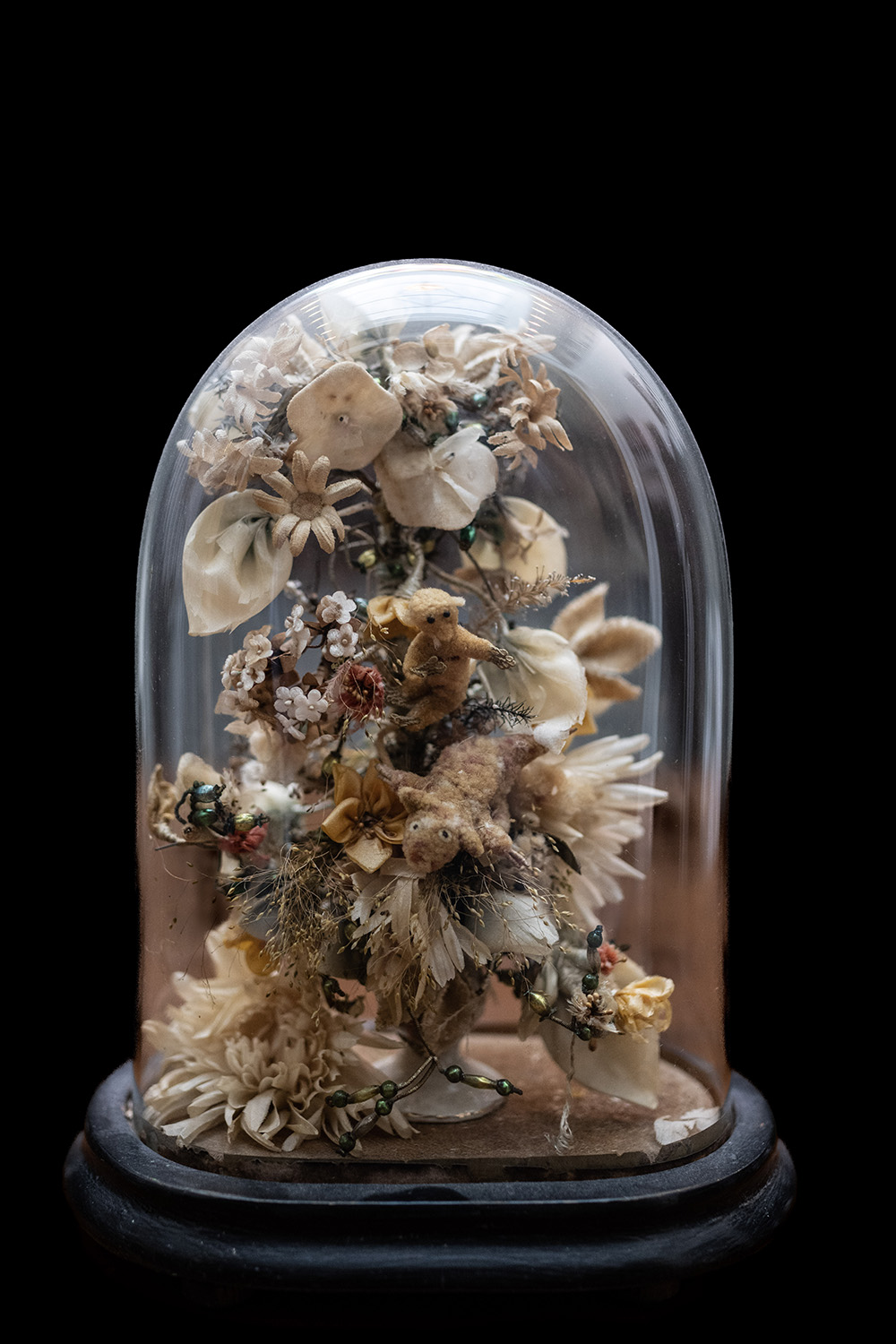Written by: Baba Colin Chee
Baba Colin Chee discovers the wonderful, whimsical world of gelai tutop
A private collector who declined to be named gives a glimpse of his extensive collection of gelai tutop (glass dome) ornaments and shares his knowledge of this collectible with The Peranakan. A Singaporean whose forebears hail from Penang, he has been seriously collecting Peranakan material culture for close to 20 years.
“It’s been a wonderful journey and we are still on it,” he says. “It just evolved gradually as we extended our collection of Peranakan ceramics to other aspects of the community’s material culture such as textiles, jewellery and others. When the collection got into furniture we ran out of space. So we built the house, designed around our collection, to accommodate everything.” His intention from the beginning was to conserve, to study and to establish deep dialogues with other serious collectors around a hybrid culture that is both rich and exuberant in its diversity. That focus has not changed.
His collection of intact and pristine gelai tutop proved to be a challenge. There are not many around for the simple reason that they were made primarily for a Penang clientele, and usually made in pairs as wedding gifts for the generally wealthier families. The glass domes are made of very thin glass and are extremely fragile which may explain their rarity.

“To the best of my knowledge, you won’t find them in Malacca or Singapore,” he says. “They are just found in Penang.” He started modestly with only two gelai tutop that he bought in Penang more than 10 years ago. After this, he was not able to grow his collection of gelai tutops for a long time. Then very suddenly, about seven years ago, a large collection of gelai tutop came on the market from a single collector in Penang and he acquired it all. In a snap, his gelai tutop collection expanded several times over to possibly be one of the largest significant collections of its kind in the region.
“These days, however, we need to be more careful,” says our collector. “Because they are rare, vendors are known to cannibalise intact parts of damaged gelai tutop, reassemble the parts, and then pass them off as the real thing.”
The Peranakans of Penang had them made locally as wedding gifts. The larger gelai tutop were likely professionally crafted in specialty shops, while the smaller ones could be fabricated at home. The really large ones, as high as two feet or 610mm, are rare, as are the small ones that can be only three inches or 76mm in height. The average height of the gelai tutop is around one foot or 305mm. The small ones may be homemade, containing simple tinsel bouquets given the limited volume space inside the glass domes.
Gelai tutop always come in pairs. Like their Chinese forefathers, the Peranakans believe that even numbers are more auspicious than odd ones. Not surprisingly, gifts are given in even numbers for the celebration of all occasions, especially weddings.
The gifts would be displayed in prominent corners of the newlyweds’ home, and especially in the bridal chamber. Because they are made largely from glittery gauze and ribbons, these come alive like jewellery when exposed to even the slightest light, and lend a grand or ethereal ambience to a well-furnished Peranakan room. To add further interest, arrangements could include representations of animals, birds (even stuffed real birds), flowers, fruits, figurines and porcelain fairies.
The hand-blown glass domes or jars, in which the arrangements are encased, were likely imported from Britain.
This Penang Peranakan tradition of glass-domed craft was inspired by British ornamental arrangements enclosed in glass domes of the Victorian era, which were in turn adapted from the French Globe de Mariée. These French glass domes served as displays for wedding souvenirs. They were placed prominently in the formal dining room and reached the height of their popularity in the 1850s.
The Victorians incorporated symbolic stuffed birds, wax flowers and leaves into their elaborate arrangements, for example, the bird symbolizes love; roses, eternal love; lime leaves, fidelity; and oak leaves, strength and longevity of the couple.
The Penang Peranakans’ unique glass dome adaptations, however, have outdone them all. The more traditional Peranakans have Chinese figurines as the centerpiece of the arrangements whereas the newly converted Christian Peranakans would include the images of Jesus and Mary in the gelai tutop, all while retaining their favourite phoenix figures. Perhaps, and possibly influenced by their Thai neighbours to the north, the ornate and glittery arrangements they made included miniature porcelain dolls in Thai costumes and are today truly a visual feast.
*This article was first published in The Peranakan, Issue 3, 2013.







